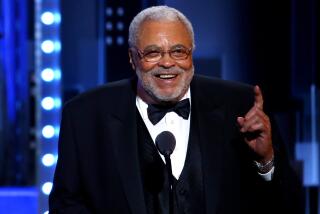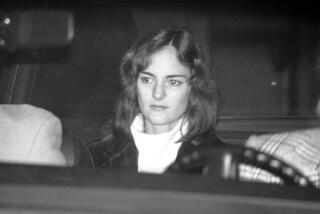NEWS ANALYSIS : Parallel Roads Led to Jonestown, Waco : Cults: Similar forces shaped Jim Jones and David Koresh into the violent, power-mad “messiahs” who doomed their followers to death.
- Share via
“Do you want me to pull back the heavens and show you my anger?” --David Koresh under siege
“I don’t mind losing my life. What about you? . . . I’d just as soon bring it to a gallant, glorious screaming end.” --Jim Jones to his followers
This time it was fire. Last time it was a cyanide potion.
Though separated by nearly 15 years and thousands of miles, Jonestown, Guyana, and Waco, Tex., were the tragic culminations of hauntingly similar events shaped by two eccentric preachers who pretended to be more than mortal.
Jim Jones and David Koresh traveled some of the same roads toward their final destiny, driven by a craving for power and adulation. And in the end, it was gunfire that left them and their followers with no escape.
America’s Bible country produced them both. Jones hailed from Indiana. Koresh was born Vernon Howell in Texas.
Each had a troubled childhood. Jones felt himself an outcast in his churchy hometown in the heartland. Koresh, branded as a boy with learning disabilities, dropped out during his first year of high school.
But both found succor and success in religion. As a boy, Jones possessed such a gift for spinning words and reading Scripture that he was put on the pulpit. It is said that Koresh, who was as shy as Jones was brassy, committed the New Testament to memory by his 12th birthday.
As adults, their ventures into the world of organized religion were stormy. Misfits, outsiders looking in, they ultimately sculpted their own churches and their own exalted images.
Aided by faith-healing fakery, Jones proclaimed himself the “Second Coming” and the ultimate humanitarian and socialist. Koresh was “The Lamb of God” and doomsday prophet.
Jones borrowed liberally from the Methodist Social Creed and received an ordination certificate from the Assemblies of God. His own Peoples Temple was sanctioned by the Disciples of Christ denomination, which provided a mantle of legitimacy, though he also lifted some techniques from Father Divine in Philadelphia and the Macumba cult in Brazil.
Koresh was baptized a Seventh-day Adventist in 1979 and two years later was expelled, in part because of his interpretations of the Bible. He then linked up with a splinter group called the Branch Davidians but had to wage a gunfire-punctuated battle to gain control of the sect.
Like other communalists before them, Jones and Koresh gravitated to California and its fertile recruiting territory. An organizational wizard, Jones established temples in Ukiah, San Francisco and Los Angeles. Though Koresh kept his base in Texas, he had at least three houses in Southern California, including one in La Verne, where he lived with 18 women, and he wooed a number of young Hollywood rock musicians to his church band.
On recruiting forays, Jones crisscrossed the nation in buses with hundreds of followers, while Koresh jetted to Hawaii, Canada, Australia and Britain. But both preachers tended to attract religious, well-intentioned people. The Peoples Temple boasted several thousand members at its peak, the Branch Davidians perhaps 150.
In their endless harangues, both men bent the Bible to shake the traditional beliefs of their followers--and to suit their own needs. Growing increasingly grandiose, they professed to be a pipeline to God, then God himself. They became the ultimate word on how to live--and die.
By degrees, they took control of the lives of their people. They determined eating habits. They dictated sexual mores. They persuaded followers to surrender money, property and even their wives. They took mistresses and sired children out of wedlock.
Jones and Koresh became father figures--dispensers of love and discipline. They directed the paddling of errant followers, adults and children alike.
By preaching apocalyptic visions of the future, they promoted a siege mentality within their churches. Jones reinforced this through faked attacks on his life and his ever-present bodyguards. Koresh told people a decade ago that he would die as a martyr.
These two leaders also demanded absolute loyalty. They wanted people who were willing to die--and kill--for them. They armed their followers and packed pistols.
Over time, they also conditioned their flocks to accept suicide. Years before Jones went to Guyana, he conducted a rehearsal: He had Temple members drink grape juice, then told them it was poison and that they would die. Koresh told the children that they could take cyanide or put a gun barrel in their mouth and fire.
While Koresh and his cult appeared to have isolationist tendencies, the Peoples Temple bore hallmarks of a social movement. Jones espoused racial equality and embraced liberal causes.
He built alliances with politicians, such as then-state Assemblyman Willie Brown, then-San Francisco County Sheriff Richard Hongisto and then-San Francisco Mayor George Moscone. As a community leader, Jones was elevated to boards and commissions wherever he went.
However, both he and Koresh came under the scrutiny of the press and government agencies. Anticipating an onslaught of damaging news stories, Jones retreated with nearly 1,000 followers to their agricultural commune in the remote jungle of Guyana and stockpiled a small arsenal.
Koresh hunkered down in his heavily armed Waco compound as a local newspaper and the federal Bureau of Alcohol, Tobacco and Firearms investigated him for possible weapons violations and child molestation.
Amid all this was a semblance of normalcy. The children of Jonestown went to school, danced and watched home videos. The Branch Davidian children knew about the movies “Kindergarten Cop” and “Beauty and the Beast” and about go-carts.
Soon enough the enemies Jones and Koresh had railed about for years came after them, fulfilling their prophesies.
In Jonestown and Waco, gunfire closed off the last avenues of escape. Federal agents were killed and wounded as they raided Koresh’s headquarters, leaving him and many followers facing possible prison terms or worse. An inferno engulfed Koresh and more than 80 of his people seven weeks later.
After a fact-finding visit by Rep. Leo Ryan of California on Nov. 18, 1978, Jones knew he was going to be exposed as an abusive tyrant. He sent gunmen to a nearby airstrip and they killed Ryan, San Francisco Examiner photographer Greg Robinson, NBC newsmen Don Harris and Bob Brown, and Temple defector Patricia Parks as they boarded a plane to leave.
Later, Jones stood before more than 900 of his followers and announced: “The congressman has been murdered. . . . It’s all over.”
“What a legacy. What a legacy,” he cried. “Don’t be afraid to die.” Then he ordered vats of cyanide-laced punch brought forward. He convinced his people they had no way out, that death at the hands of government troops would await them.
Both tragedies were widely described as mass suicides, but the Guyana tragedy was as much a mass murder as a suicide. Jones had absolute control. Dozens of adult corpses had needle marks, and eyewitnesses said some people were forcibly injected with poison. The compound was surrounded by guards with guns and crossbows to prevent escape. And nearly 300 children died, some infants who had poison squirted into their mouths.
What happened behind the walls, gunfire and flames of Waco on Monday may never be clear, but it was reported that Koresh tightly controlled his flock--and two dozen children died.
In the aftermath of each tragedy, criticism rained down on government agencies for their handling of both cases. Speculation will no doubt persist about how and whether these tragedies could have been averted.
It was Jones and Koresh, however, who set the stage for the self-destruction of themselves and those they professed to love. And their final scenes harked back to the sign above Jones’ throne that began: “Those who do not remember the past . . . “
Reiterman, The Times deputy metro editor for special projects, investigated the Peoples Temple for a year and a half prior to Jonestown as a San Francisco Examiner reporter. He was wounded in the gunfire that killed Ryan and four others. He is the author, with John Jacobs, of “Raven: The Untold Story of The Rev. Jim Jones and His People.”
Echoes of Jonestown
A look at the leaders at Jonestown and Waco and the horrors they orchestrated. BACKGROUND
Jonestown November, 1978 The Rev. Jim Jones and members of his People’s Temple in Guyana commit mass suicide after followers kill Rep. Leo Ryan of California and four others who had come to check on allegations of member mistreatment.
Waco April, 1993 David Koresh and members of his Branch Davidian cult perish in an inferno at the Texas compound. FBI says fire was set by cult members; survivors say FBI tank started blaze while striking the compound.
HOW THEY COMPARE
Jonestown Waco Name of cult People’s Temple Branch Davidians Peak number of members Several thousand Several hundred Killed in murder/suicide 913 86 Children killed 300 24 Years compound operated 1974-’78 Late 1980s-93 Size of compound 300 acres 77 acres Method of death Grape drink laced with Fire; also possible potassium cyanide; gunfire also gunfire
Sources: State Department; Times staff
More to Read
Sign up for Essential California
The most important California stories and recommendations in your inbox every morning.
You may occasionally receive promotional content from the Los Angeles Times.










